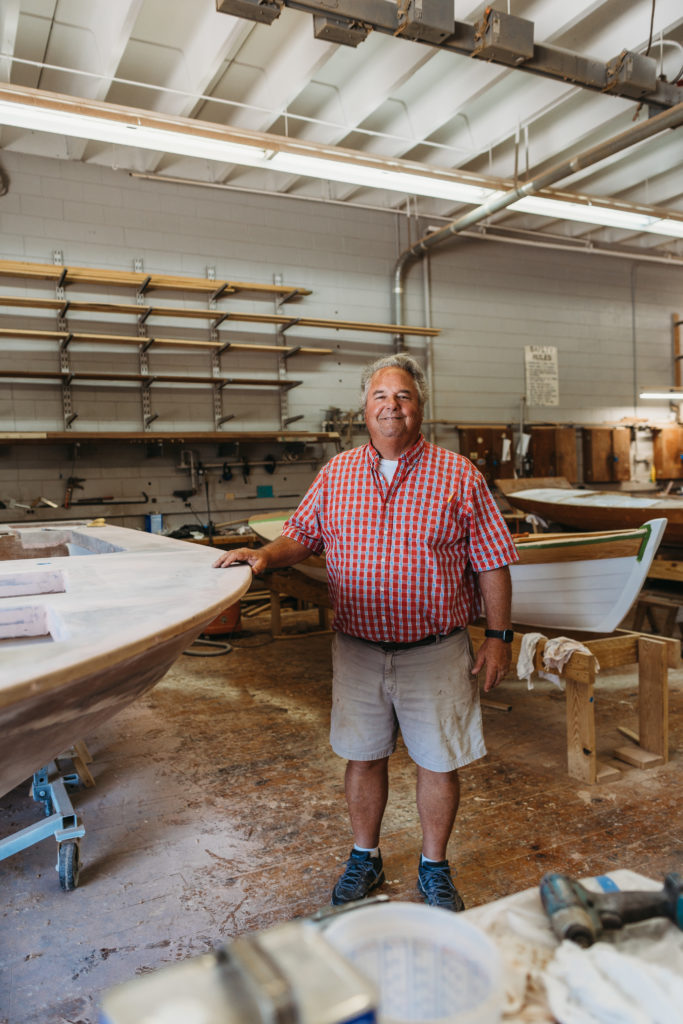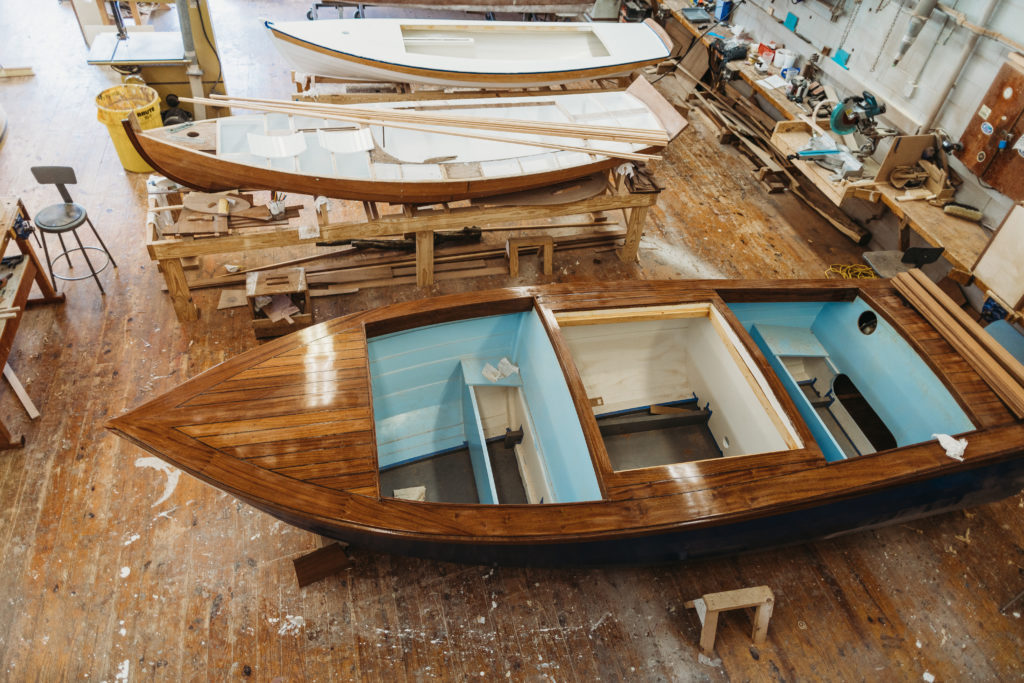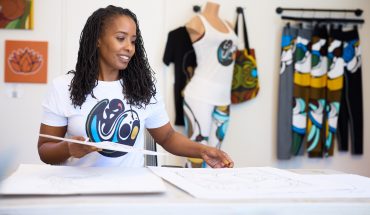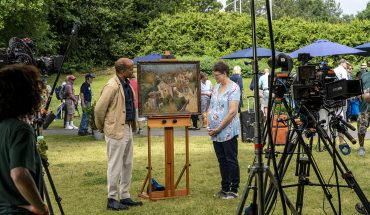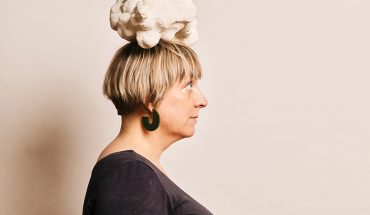This master shipwright and longtime professor at Cape Fear Community College reinvented its wooden boatbuilding program.
by Wiley Cash | photography by Mallory Cash
Master shipwright Mark Bayne is standing in an open bay at his workshop in downtown Wilmington. Here, he has been teaching the art of building wooden boats at Cape Fear Community College for the past 10 years.
Over his shoulder, the murky brown Cape Fear River plods slowly eastward, where it will meet the Atlantic Ocean in just a few miles. The day is hot and bright. A stiff, warm breeze rolls in off the river. All around us, people are working on a half-dozen wooden boats in various stages of construction. There’s a flats boat that was specially designed for fishermen to stand with stability and cast a line from the broad deck; beside it is a beautiful, narrow melonseed just waiting for a sail. In the far corner of the workshop is a Jersey Speed Skiff that, as soon as it’s complete, will move next door to the engine program for the fall semester, where the team who built it will fit it with an inboard motor.
After decades building boats on his own and another decade of teaching people to do the same, Bayne is accustomed to being surrounded by the sounds of saws and routers, the fine mist of sawdust floating through the air. “I’ve specialized in not specializing,” he says. “I enjoy building things and boat-building allows you to be creative.”
Bayne is quick to smile, and he’s still carrying the glow of holding a new granddaughter who was born down in Charleston, South Carolina, just a few nights before. That’s where Bayne was raised, and his whole family lives there now, including his wife and their four grown children. Bayne splits his time between the low country and Cape Fear, teaching at the college during the week and heading home on the weekend. His wife used to make the trips with him, but now that she’s surrounded by grandchildren she’s less likely to leave home.
Bayne understands. He hears the call, too: This is the last course he’ll teach as program director of Cape Fear Community College’s Wooden Boat Building Program.
But in order to understand how Bayne’s time at the college is ending, you have to understand how it began.
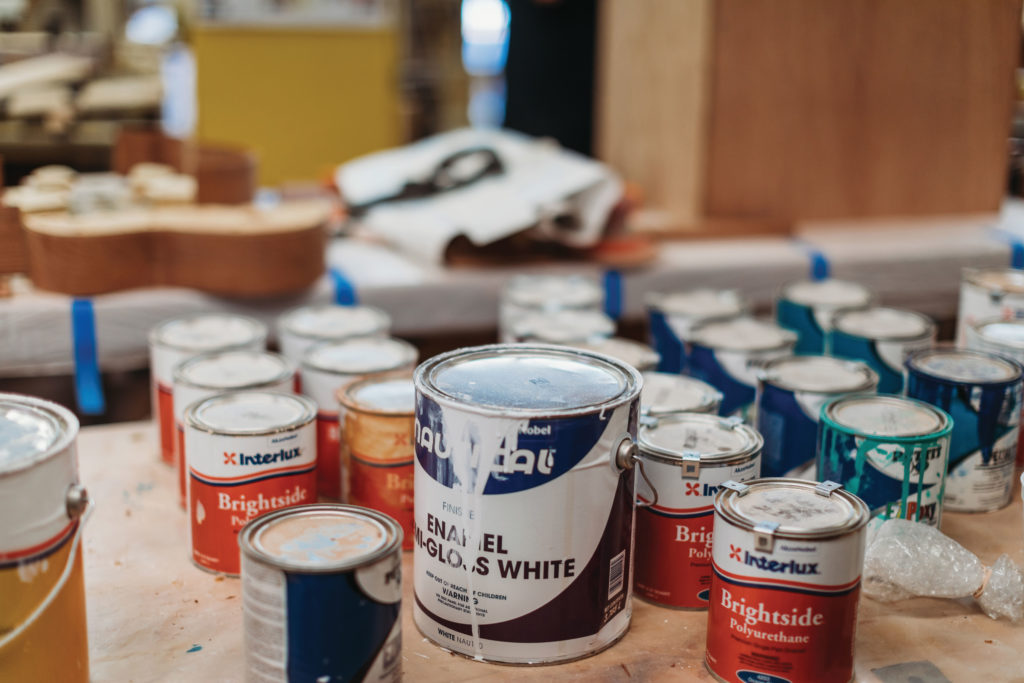
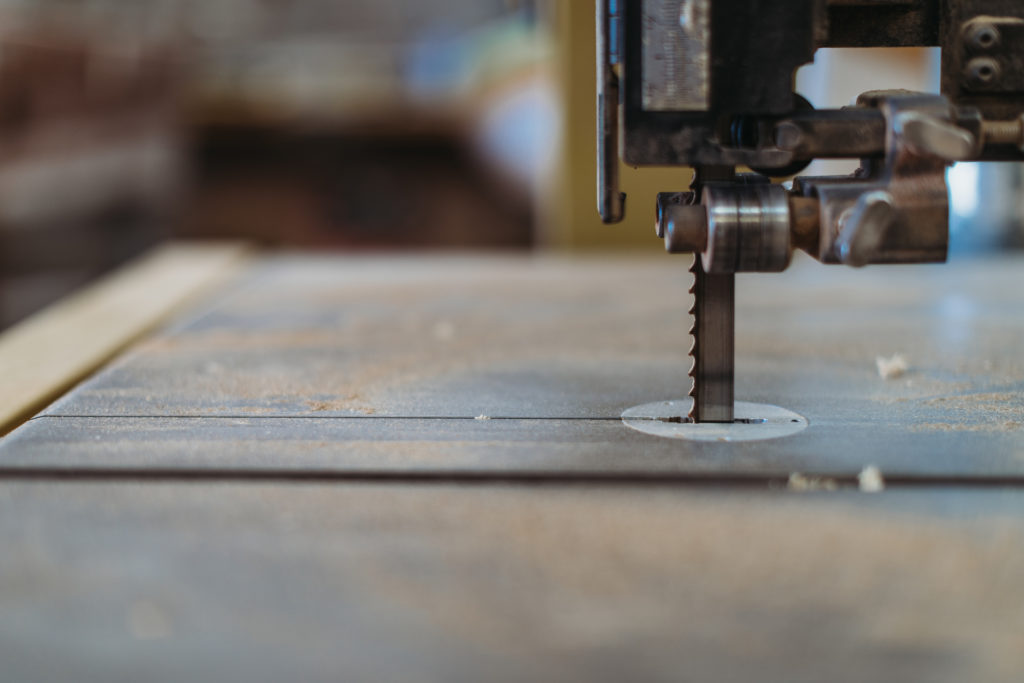
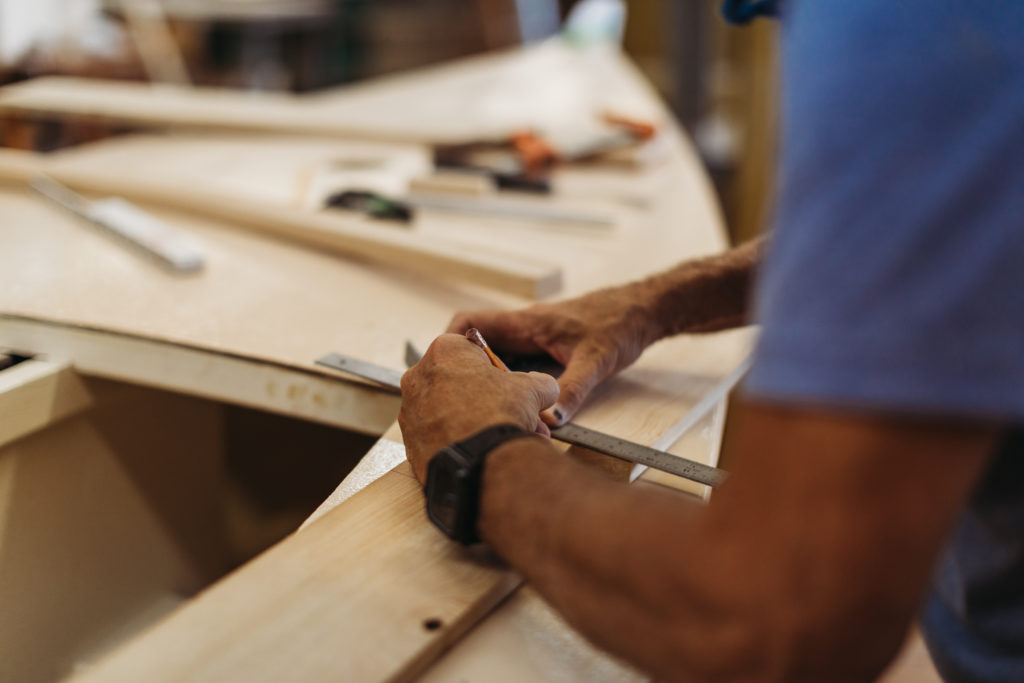
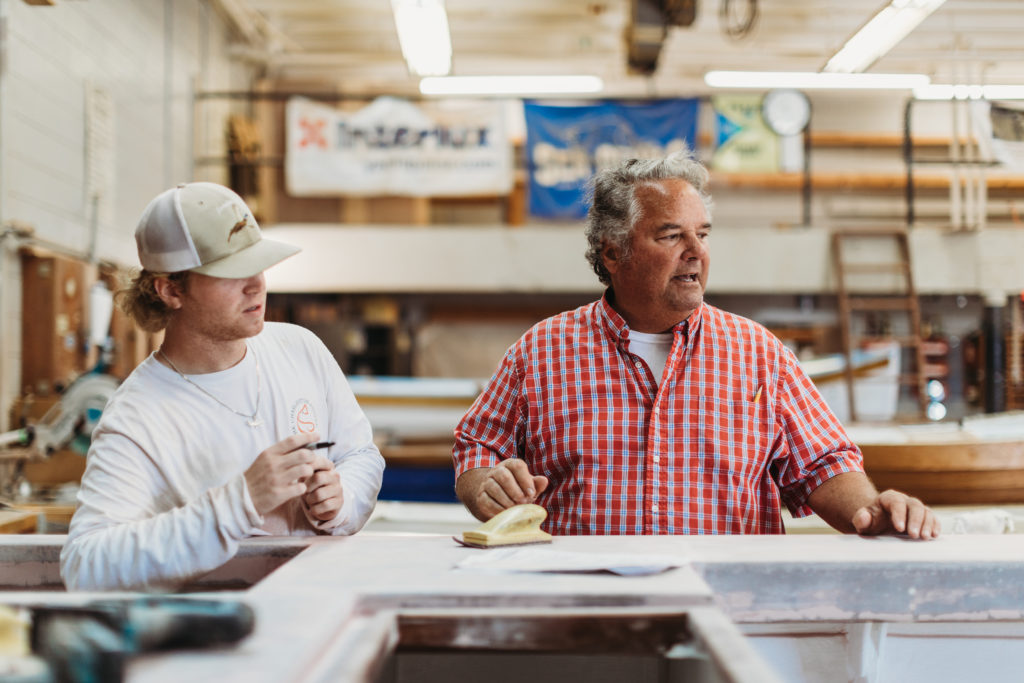
Bayne grew up on “the backside” of Isle of Palms, South Carolina, in the marsh, sailing small boats, swimming and crabbing with his younger brother and kids from the neighborhood.
When I ask if they were ever so bold as to round the island and head for the open water, he smiles and pauses as if his mother and father are within earshot. “Officially, we did not do that,” he says, meaning, of course they did.
After a brief stint in college, Bayne dropped out and worked at Mount Pleasant Boatbuilding Company as a helper in the joinery shop, where he learned to build and fit small, intricate parts to boats. A welder in the boatyard mentioned that he’d heard about a new boat-building program beginning up the coast at Cape Fear Community College. Bayne enrolled in 1978 and was a member of the program’s first class.
With his classmates and instructors, Bayne literally helped build the program: They put down the hardwood floor in the workshop, and they fit together the workbenches from old bowling alley lanes that had been stored in a chicken coop in Southern Pines.
After completing the program and getting his degree, Bayne went back to the Mount Pleasant Boatbuilding Company with the knowledge of how to loft boats, which is the process of drawing out plans on the floor, cutting and fitting the pieces and constructing the boats using hand tools.
On the weekends, Bayne worked for himself and soon found that he could make more money on his own while also building boats that interested and challenged him. In the late 1980s, he opened Sawdust Boatworks, and then he launched Sea Island Boatworks.
“No one has to have a boat,” Bayne says, “so when someone hires you to build one, it’s a very special relationship.”
He can still remember his earliest creations. The first boat he built after opening Sawdust is still around; it’s a 14-foot marsh-hen hunting boat. “That guy turned into a good customer,” Bayne says. “I built multiple boats for him.”
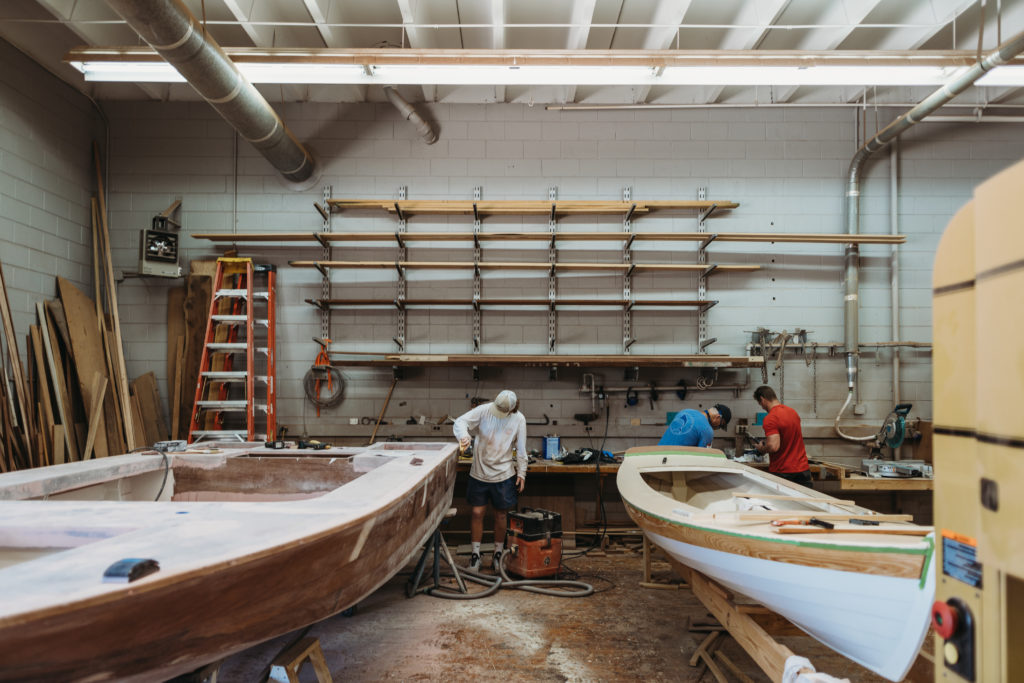
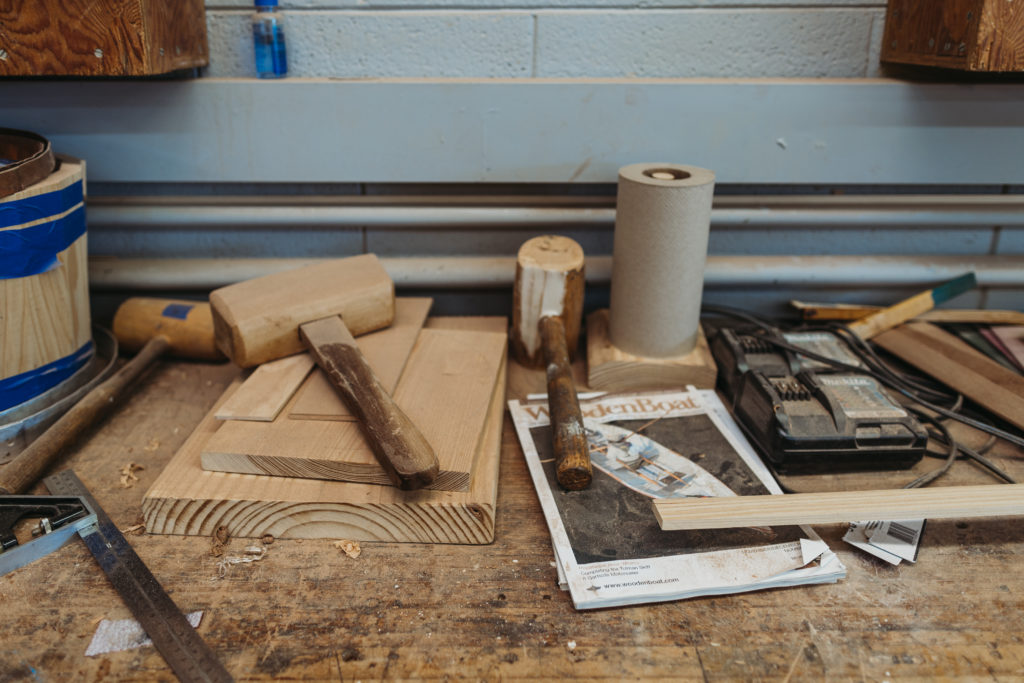
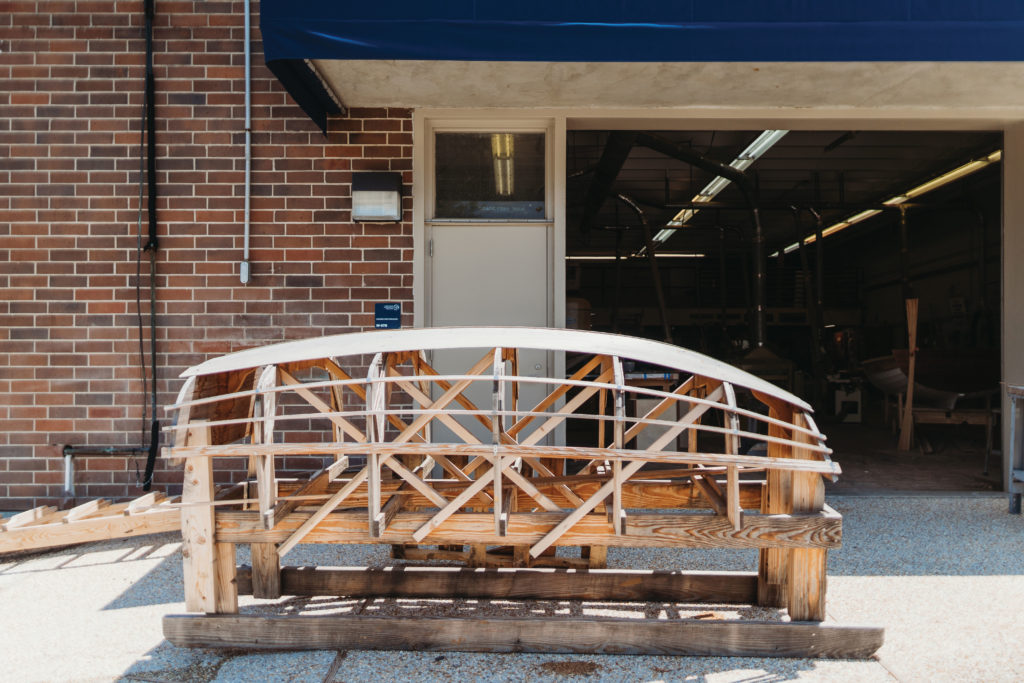
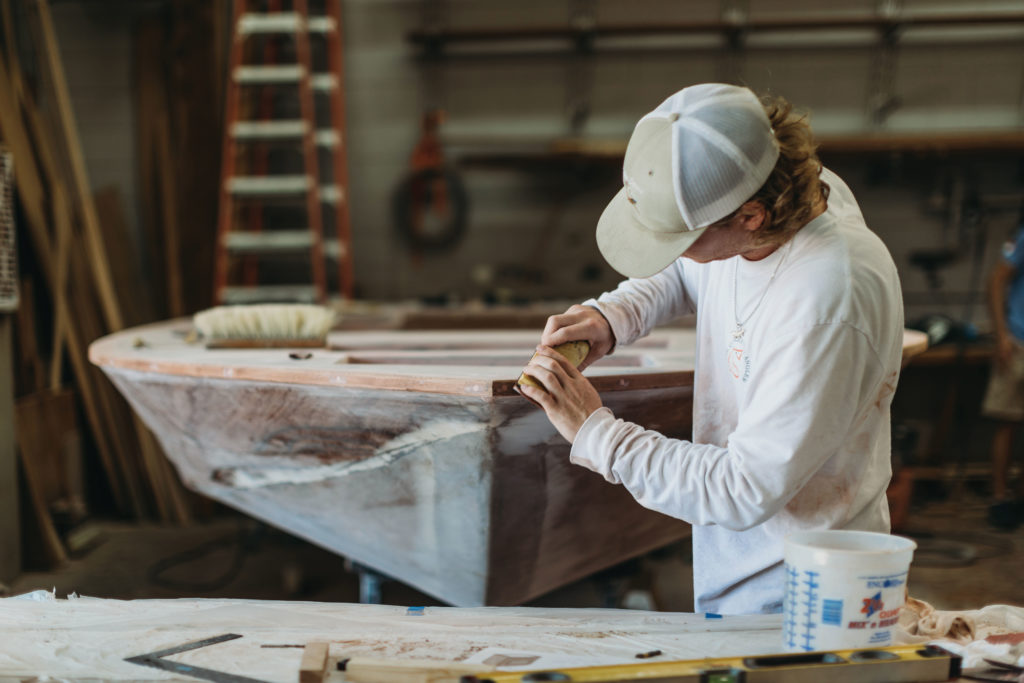
Over the decades, Bayne traveled up and down the East Coast, building boats from the Gulf of Mexico to the Chesapeake Bay, including the iconic Spirit of South Carolina, a tall ship that was constructed and ported in Charleston. The keel was laid in the summer of 2001, and the final plank was installed in the summer of 2006.
“Sometimes you build a boat to a plan that somebody else drew, and sometimes you build a boat by eye. You’ve got to know a lot,” he says. “I worked with a guy in Panama City, Florida, once, and we built a 68-foot shrimp boat, just him and me. He was the master and I was the apprentice, but there was no plan, so you have to know all the construction details. When you’re doing it by hand with no plan it’s called rack of eye. It’s fun, it’s rewarding.”
In 2012, Bayne left the boatyards of South Carolina, as well as his life as a far-ranging boatbuilder, and returned “home” to Cape Fear Community College as head of the Wooden Boat Building Program, where his professional career had started over three decades earlier. When he arrived, he found that he wanted to bring his vast experience to bear on the program’s curriculum.
“They had a good program going, but it wasn’t the way I wanted to do it,” he says. For years, the program had focused on moving students through stages of instruction on several different boats at various levels of completion. The students learned piecemeal, but that meant that they never completed a whole boat from start to finish. “I wanted students to work from lofting to launching,” he says.
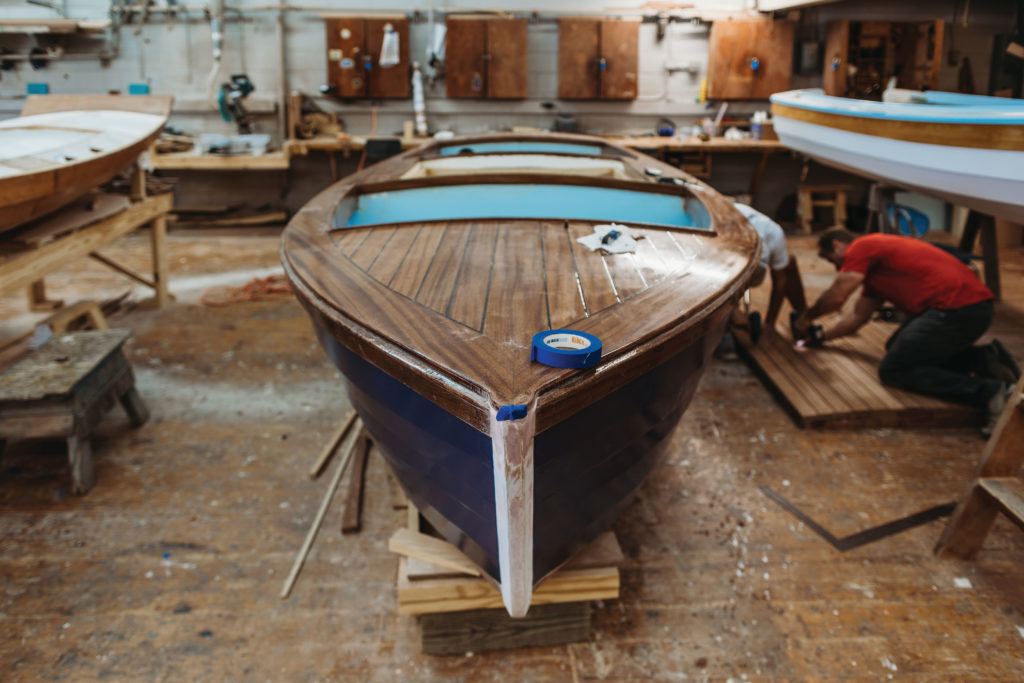
“Mark has done a great job of giving this program a shot of momentum,” says Walter Atkins, an instructor in the boat-building program who has decades of experience building custom boat interiors. “I’ve learned a ton from Mark,” Atkins says. “It’s been awesome. We don’t use software where everything is designed on a screen. This is 1,000 percent old school.”
Over three semesters, including a summer term, students begin their work with hand tools before graduating to power tools. Then the class moves up to the loft above the shop floor, where they draw life-sized plans for the various boats they want to build.
“People slowly pair up,” Atkins says. “You see the groups start to clump together.” Recent high school graduates partner with retirees. Oftentimes, service veterans find one another, bonding over their shared experiences and their interest in boat-building. It’s clear that both Atkins and Bayne find relationships with student-veterans important and endearing.
“I don’t ask about their service,” Bayne says, “but I listen when they talk about it.”
Eventually, the class moves to the shop floor, building the forms, fairing the hulls and fitting the interior cabinetry. By the end of the program, as many as six complete boats are ready for the water. Once the boats are proven seaworthy, they’re auctioned off on a public website, where eager buyers are already lying in wait. The boats are purchased by people up and down the East Coast.
Bayne takes pride in his students’ work, and he admits that, if not for his wife, four children and growing number of grandchildren living down in the low country, he’d continue to work at Cape Fear.
But he’s not really retiring. He’ll work some with his oldest son, Coulson, who is now building boats on his own with his company Son of Bayne Boatworks.
And there’s a 145-year-old historic schooner down in Panama City that was destroyed by Hurricane Michael that Bayne wants to get his hands on. He’ll be busy, but according to him, he won’t be working.
“Boat-building has never been a job,” he says. “I’ve never felt like I had a job a single day in my life.”
__
This article originally appeared in the July 2022 issue of WALTER magazine.

